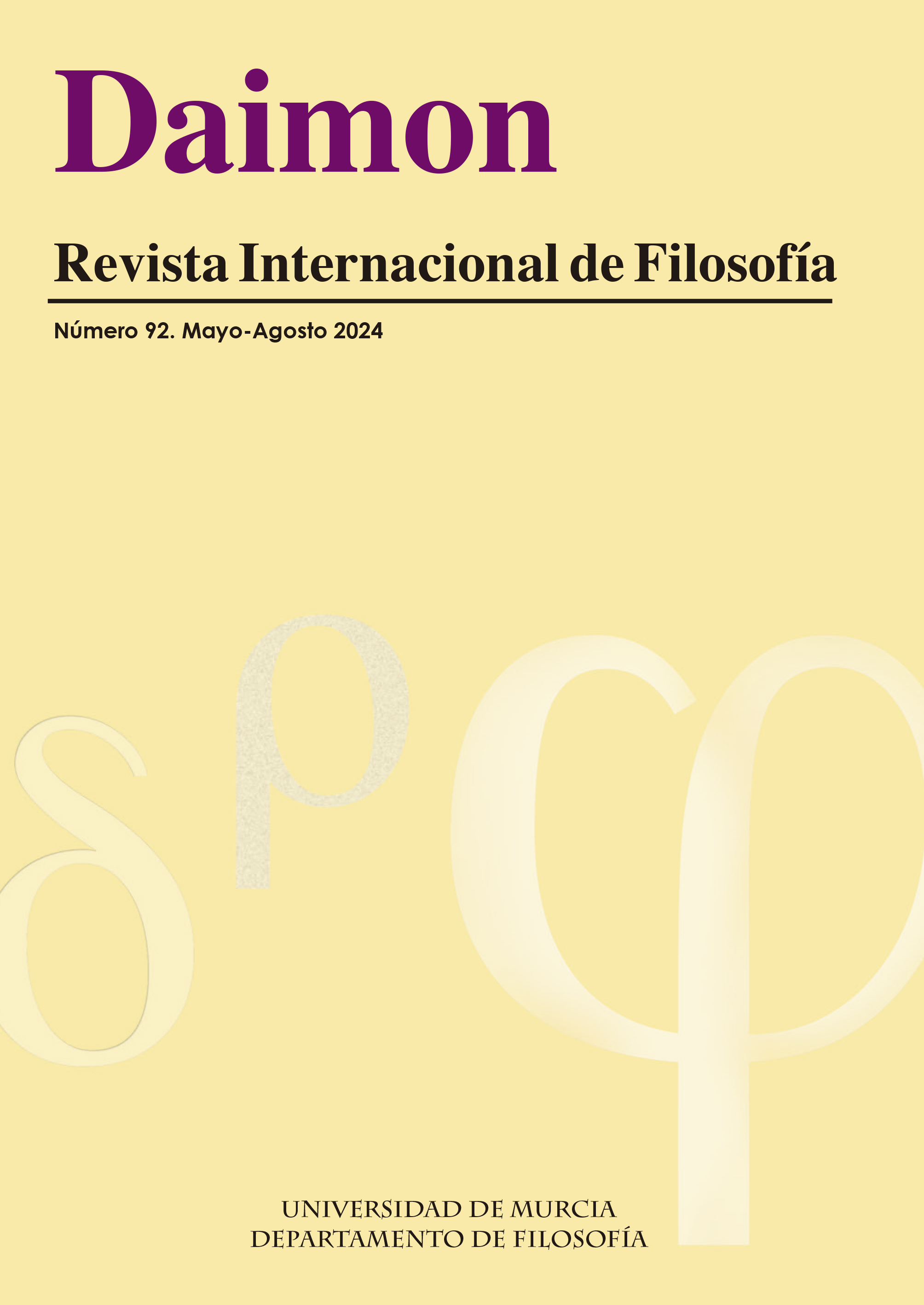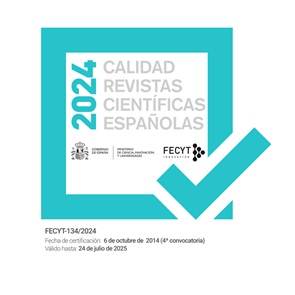Disenchantment and Post-Photography: notes on Contemporary Image and Death
Supporting Agencies
- Este artículo ha sido escrito en el marco del proyecto de investigación “Archivo Español de Media Art”, HAR2016-75949-C2-2-R, financiado por el Ministerio de Ciencia, Innovación y Universidades.
Abstract
This article deals with a deep and theoretical thought on post-photography from the point of view of image’s genealogical approach. It is our aim to problematize the current image’s Statute throughout the cultural pattern’s context, mediated by digital technology. There will be three main axes in our research, namely the image’s symbolical power: it must be taken connected with mortality and the religious side of image, according to the Max Weber concept’s Disenchantment. Around these conceptual axes, our article will try to link the ontology traditional subjects on image with the current photography practices, into the contemporary framework of the so-called post-photography. Therefore, it is needed to articulate a conceptual background around the new forms of gaze, conditioned by fragmentation, saturation, and acceleration. The critical apparatus will be based on a multidisciplinary focus. The works of authors like Joan Fontcuberta on post-photography and Régis Debray on life and death of image will vertebrate our article. We will take an essayistic point of view problematizing the subjects developed in the article as an invitation to deep thoughts.
Downloads
References
Ariès, P. (2000). Historia de la muerte en Occidente. Barcelona: Acantilado.
Arnheim, R. (2006). Arte y percepción visual. Madrid: Alianza.
Augé, M. (1994). Pour une anthropologie des mondes contemporains. Paris : Aubier.
Barry, Christopher T., Doucette, Hanna, Loflin, Della C., Rivera-Hudson, Nicole y Herrington, Lacey L. (2017). “Let me take a selfie”: Associations between self-photography, narcissism, and self-esteem. Psychology of Popular Media Culture, 6(1), 48-60. https://doi.org/10.1037/ppm0000089
Barthes, R. (2016). La cámara lúcida. Barcelona: Paidós.
Baudrillard, J. (2004). Le pacte de lucidité ou l’intelligence du Mal. Paris : Galilée.
Baudrillard, J. (2005). Le complot de l’art. Paris : Sens&Tonka.
Bauman, Z. (2002). Modernidad líquida. México: FCE.
Belting, H. (1990). Likeness and Presence. A History of the Image before the Era of Art. Munich: Oscar Beck.
Belting. H. (2010). Imagen y culto. Madrid: Akal.
Benjamin, W. (2004). Sobre la fotografía. Valencia: Pre-Textos.
Berger, J. (2016). Modos de ver. Barcelona: Gustavo Gili (3ª edición).
Bertolini, M. (2015). The “Pictorial Turn” as Crisis and the Necessity of a Critique of Visual Culture. Philosophy Study, March 2015, Vol. 5, No. 3, 121-130 doi: 10.17265/2159-5313/2015.03.001
Bioy Casares, A. (2003). La invención de Morel. Madrid: El país.
Boehm, G. (2006). Was ist ein Bild? Stuttgart: Fink Wilhelm GmbH + Co.KG.
Bolt, B. (2004). Art Beyond Representation: The Performative Power of the Image. New York: Palgrave McMillan.
Brea, J. L. (2005). Por una epistemología política de la visualidad. En Brea, J. L. (editor). Estudios visuales. Madrid: Akal.
Brea, J. L. (2010). Las tres eras de la imagen. Madrid: Akal.
Bryson, N. (1991). Visión y pintura: la lógica de la mirada. Madrid: Alianza.
Cassirer, E. (1955). Philosophy of Symbolic Forms. New Haven: Yale University Press.
Crary, J. (2008). Suspensiones de la percepción. Madrid: Akal.
De Kerckhove, D. (2009). La piel de la cultura. Barcelona: Gedisa.
Debord, G. (2006). La société du spectacle. En Œuvres. Paris : Gallimard.
Debray, R. (1994). Vida y muerte de la imagen. Barcelona: Paidós.
Debrix, F. (1999). Post-Mortem Photography: Gilles Peress and the Taxonomy of Death. Postmodern Culture 9(2), doi:10.1353/pmc.1999.0009.
Derrida, J. (1997). Mal de archivo, una impresión freudiana. Madrid: Trotta.
Durkheim, E. (2000). Las formas elementales de la vida religiosa. México: Colofón.
Elias, N. (1987). La soledad de los moribundos. México: FCE.
Fetveit, A. (2013). The Ubiquity of Photography. In: Throughout : Art and Culture Emerging with Ubiquitous Computing. Cambridge, MA: s.n., pp. 89-102.
Fontcuberta, J. (2011). El beso de Judas: fotografía y verdad. Barcelona: Gustavo Gili.
Fontcuberta, J. (2016). La furia de las imágenes. Barcelona: Galaxia Gutenberg.
Freedberg, D. (1991). The Power of Images. Chicago: The University of Chicago Press.
Gauthier, G. (1996). Veinte lecciones sobre la imagen y el sentido. Madrid: Cátedra.
García Varas, A., ed. (2012). Filosofía de la imagen. Salamanca: Universidad de Salamanca.
Gell, A. (1997). Art and Agency. Oxford: Oxford University Press.
Gibbs, M. et al. (2014). Funeral and Instagram: death, social media, and platform vernacular. Information, Communication and Society, Volume 18, pp. 255-268, DOI: https://doi.org/10.1080/1369118X.2014.987152
Giddens, A. (1994). Modernidad e identidad del yo. Barcelona: Península.
Gubern, R. (2005). La imagen pornográfica y otras perversiones ópticas. Barcelona: Anagrama.
Harvey, D. (1998). La condición de la postmodernidad. Buenos Aires: Amorrortu.
Howells, R. y Negreiros, J. (2012). Visual Culture. Cambridge & Malden: Polity Press.
Kaida K., Mori H., Oka M. (2020) Interaction by Taking a Picture for Smartphone Generation. In: Yamamoto S., Mori H. (eds) Human Interface and the Management of Information. Interacting with Information. HCII 2020. Lecture Notes in Computer Science, vol 12185. Springer, Cham. https://doi.org/10.1007/978-3-030-50017-7_24
Katz, J. (2005). Magic in the Air: Mobile Communication and the Transformation of Social Life. New York: Routledge.
Kindberg, T., Spasojevic, M., Fleck, R. & Sellen, A. (2005). The Ubiquitous Camera: An In-Depth Study of Camera Phone Use. IEEE Pervasive Computing, pp. 42-50.
Kulvicki, J. (2013). Images (New Problems of Philosophy). New York: Routledge.
Maffesoli, M. (2020). La nostalgie du sacré. Paris : Cerf.
McLuhan, M. (2009). Comprender los medios de comunicación: las extensiones del ser humano. Barcelona: Paidós Ibérica.
Muñoz, A. y Martí Testón A. (2018). Fotografía y post-realidad. Laocoonte Revista de Estética y Teoría de las Artes 5, DOI: https://doi.org/10.7203/laocoonte.0.5.12407
Noble, D. (1999). La religión de la tecnología. Barcelona: Paidós.
Soriano Nieto, N. (2010). ¿Qué significa mirar siendo contemporáneo? Arte, Individuo y Sociedad, 22 (1), 75-94
Jay, M. (1988). “Scopic Regimes of Modernity,” Vision and Visuality, edited by Hal Foster. Seattle: Bay Press.
Menke, C. (2017). La fuerza del arte. Santiago de Chile: Metales pesados.
Morin, E. (2003). El hombre y la muerte. Barcelona: Kairós (3ª edición).
Mitchell, W. J. (1992). The Reconfigured Eye: Visual Truth in the Post-Photographic Era. Cambridge, Massachusetts: The MIT Press.
Mitchell, W. J. (1994). Picture Theory. London & Chicago: The University of Chigago Press.
Mumford, L. (2002). Técnica y civilización. Madrid: Alianza.
Ong, W. (1987). Oralidad y escritura. México: FCE.
Patino, B. (2020). La civilización de la memoria de pez. Madrid: Alianza.
Perniola, M. (2008). Los situacionistas. Madrid: Acuarela.
Perniola, M. (2016). El arte expandido. Madrid: Casimiro libros.
Ritzer, G. (2000). El encanto de un mundo desencantado. Madrid: Ariel.
Rosa, H. (2016). Alienación y aceleración. Madrid: Katz.
Rosa, H. (2019). Resonancia. Madrid: Katz.
Rubio, R. (2017). La reciente filosofía de la imagen. Análisis crítico del debate actual y consideración de posibles aportes. Ideas y Valores, 66 (163), 273-298. http://dx.doi.org/10.15446/ideasyvalores.v66n163.51068
Salgado, S. & Wanick-Salgado, L. (2000). Éxodos. Madrid: ELR.
Salgado, S. & Wanick-Salgado, L. (2020). Génesis. Colonia: Taschen.
Sartori, G. (2002). Homo videns: la sociedad teledirigida. Barcelona: Taurus.
Sartre, J. P. (1976). Lo imaginario. Buenos Aires: Losada.
Sarvas, R. & Frohlich, D. M. (2011). From snapshots to social media: The changing picture of domestic photography. New York: Springer.
Sontag, S. (1996). Sobre la fotografía. Barcelona: Edhasa.
Sontag, S. (2004). Ante el dolor de los demás. Barcelona: Santillana.
Steiner, G. (2016). Nostalgia del absoluto. Madrid: Siruela.
Twenge, J. M. (2017). iGen. New York: Atria Books.
Villafañe, J. & Mínguez, N. (2002). Principios de la teoría de la imagen. Madrid: Pirámide.
Virilio, P. (1995). La vitesse de la libération. Paris : Galilée.
Virilio, P. (2003). Estética de la desaparición. Barcelona: Anagrama.
Virilio, P. (2009). Le futurisme de l’instant. Paris : Galilée.
Wagner, L. A. (2015). When Your Smartphone Is Too Smart for Your Own Good: How Social Media Alters Human Relationships. The Journal of Individual Psychology, Vol. 71 Nº 2.
Wajcman, J. (2017). Esclavos del tiempo. Barcelona: Paidós Ibérica.
Walsh, M. J. y Baker, S. A. (2016). The selfie and the transformation of the public-private distinction. Information, Communication & Society, 20(8), 1185-1203. https://doi.org/10.1080/1369118X.2016.1220969
Weber, M. (1979). Economía y sociedad I. México: FCE (2ª edición).
Weber, M. (2006). La ciencia como profesión. Barcelona: Espasa.
Wells, L. (2000). Photography: a critical introduction. London: Routledge.
Wright Mills, C. (1999). La imaginación sociológica. México: FCE.
Wu, T. (2020). Comerciantes de atención. Madrid: Capitán Swing.
Zunzunegui, S. (1992). Pensar la imagen. Madrid: Cátedra.
Copyright (c) 2024 Daimon Revista Internacional de Filosofia

This work is licensed under a Creative Commons Attribution-NonCommercial-NoDerivatives 3.0 Unported License.
Las obras que se publican en esta revista están sujetas a los siguientes términos:
1. El Servicio de Publicaciones de la Universidad de Murcia (la editorial) conserva los derechos patrimoniales (copyright) de las obras publicadas, y favorece y permite la reutilización de las mismas bajo la licencia de uso indicada en el punto 2.
2. Las obras se publican en la edición electrónica de la revista bajo una licencia Creative Commons Reconocimiento-NoComercial-SinObraDerivada 3.0 España (texto legal). Se pueden copiar, usar, difundir, transmitir y exponer públicamente, siempre que: i) se cite la autoría y la fuente original de su publicación (revista, editorial y URL de la obra); ii) no se usen para fines comerciales; iii) si remezcla, transforma o crea a partir del material, no podrá distribuir el material modificado.
3. Condiciones de auto-archivo. Se permite y se anima a los autores a difundir electrónicamente las versiones pre-print (versión antes de ser evaluada) y/o post-print (versión evaluada y aceptada para su publicación) de sus obras antes de su publicación, ya que favorece su circulación y difusión más temprana y con ello un posible aumento en su citación y alcance entre la comunidad académica. Color RoMEO: verde.













